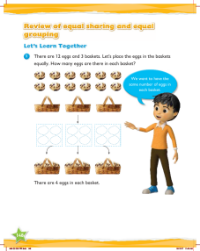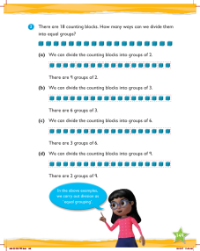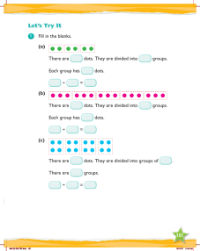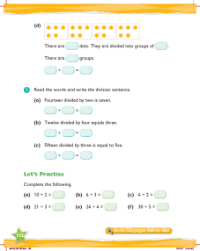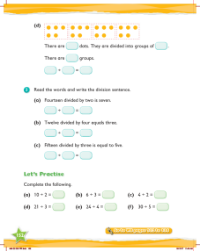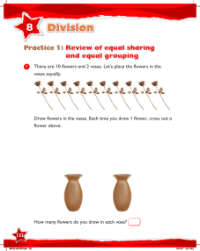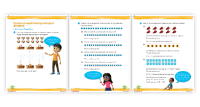Max Maths, Year 3, Learn together, Review of equal sharing and equal grouping (3)
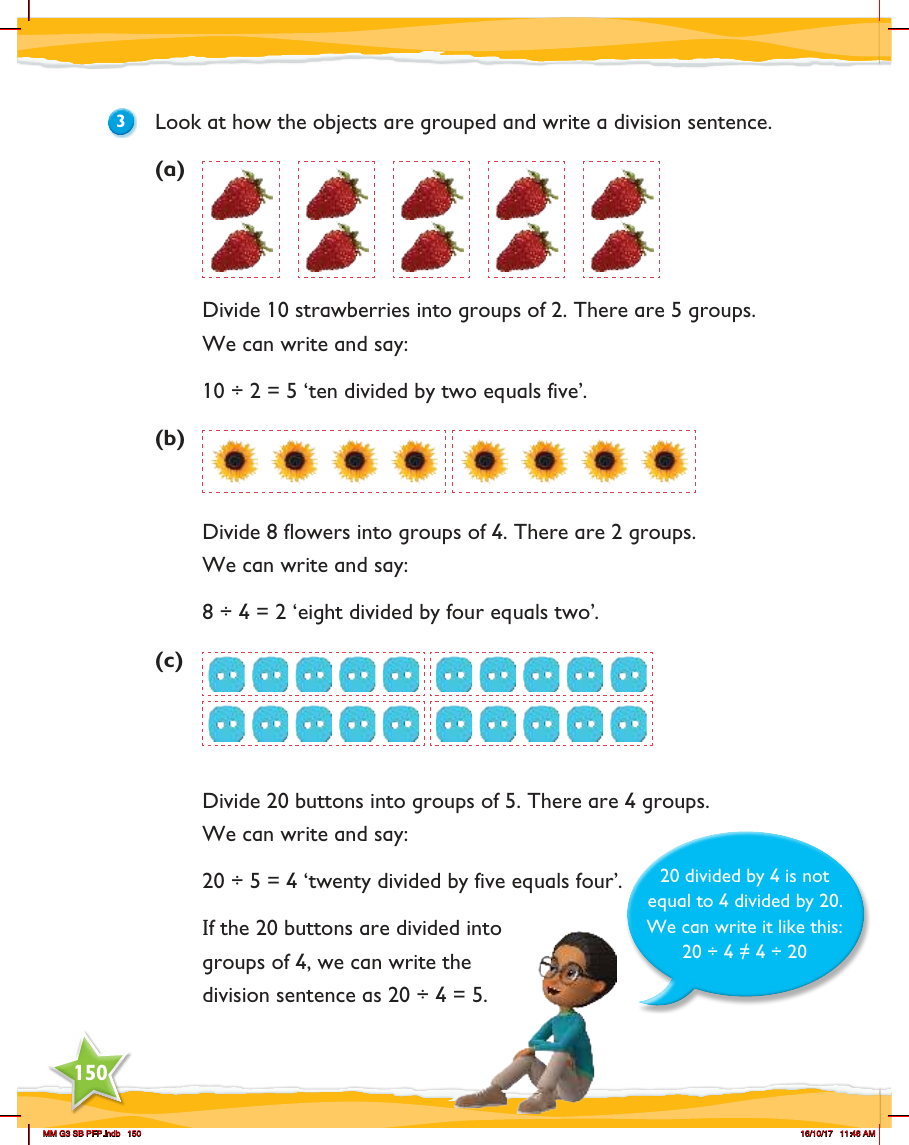
Maths Resource Description
In the Year 3 Max Maths programme, children review the concepts of equal sharing and equal grouping with practical examples. They are presented with scenarios involving everyday items, such as strawberries, flowers, and buttons, to help them visualise and understand division. For instance, when 10 strawberries are divided into groups of 2, the children learn to express this as a division sentence: 10 ÷ 2 = 5, which reads 'ten divided by two equals five'. This helps them see that dividing an amount equally creates a specific number of groups.
In another example, the children divide 8 flowers into groups of 4, understanding that this results in 2 groups. They write the division sentence as 8 ÷ 4 = 2, saying 'eight divided by four equals two'. Similarly, dividing 20 buttons into groups of 5 leads to the sentence 20 ÷ 5 = 4, pronounced 'twenty divided by five equals four'. The lesson also emphasises the importance of order in division, showing that 20 ÷ 4 is not the same as 4 ÷ 20. By writing out the division sentences and verbally expressing them, children reinforce their learning and grasp the concept of division as both sharing and grouping equally.
